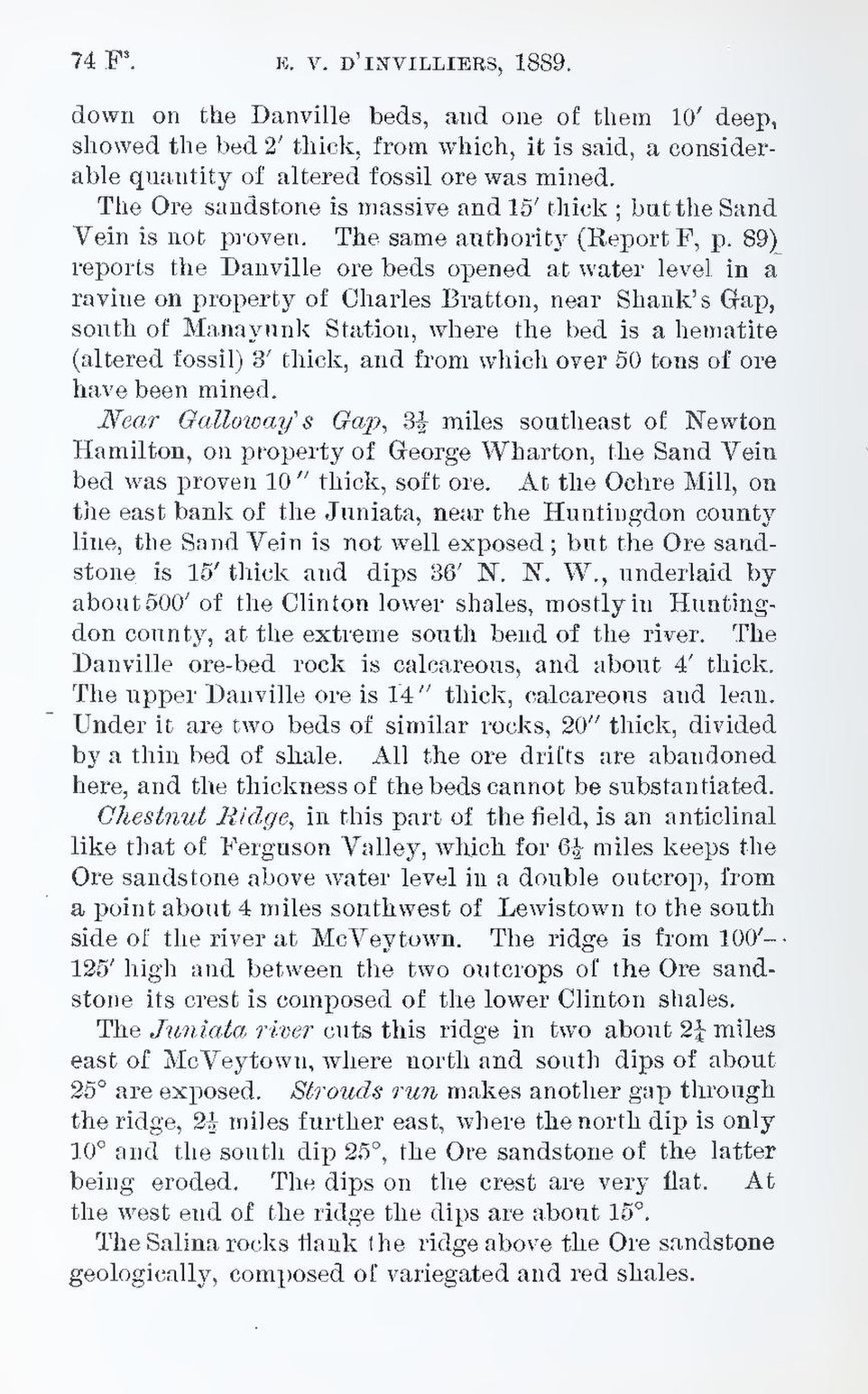down on the Danville beds, and one of them 10′ deep, showed the bed 2′ thick, from which, it is said, a considerable quantity of altered fossil ore was mined.
The Ore sandstone is massive and 15′ thick; but the Sand Vein is not proven. The same authority (Report F, p. 89) reports the Danville ore beds opened at water level in a ravine on property of Charles Bratton, near Shank’s Gap, south of Manayunk Station, where the bed is a hematite (altered fossil) 3′ thick, and from which over 50 tons of ore have been mined.
Near Galloway’s Gap, 3½ miles southeast of Newton Hamilton, on property of George Wharton, the Sand Vein bed was proven 10″ thick, soft ore. At the Ochre Mill, on the east bank of the Juniata, near the Huntingdon county line, the Sand Vein is not well exposed; but the Ore sandstone is 15′ thick and dips 36′ N. N. W., underlaid by about 500′ of the Clinton lower shales, mostly in Huntingdon county, at the extreme south bend of the river. The Danville ore-bed rock is calcareous, and about 4′ thick. The upper Danville ore is 14″ thick, calcareous and lean. Under it are two beds of similar rocks, 20″ thick, divided by a thin bed of shale. All the ore drifts are abandoned here, and the thickness of the beds cannot be substantiated.
Chestnut Ridge, in this part of the field, is an anticlinal like that of Ferguson Valley, which for 6½ miles keeps the Ore sandstone above water level in a double outerop, from a point about 4 miles sonthwest of Lewistown to the south side of the river at McVeytown. The ridge is from 100′–125′ high and between the two outcrops of the Ore sandstone its crest is composed of the lower Clinton shales,
The Juniata river cuts this ridge in two about 2¼ miles east of McVeytown, where north and south dips of about 25° are exposed. Strouds run makes another gap through the ridge, 2½ miles further east, where the north dip is only 10° and the south dip 25°, the Ore sandstone of the latter being eroded. The dips on the crest are very flat. At the west end of the ridge the dips are about 15°.
The Salina rocks flank the ridge above the Ore sandstone geologically, composed of variegated and red shales.
